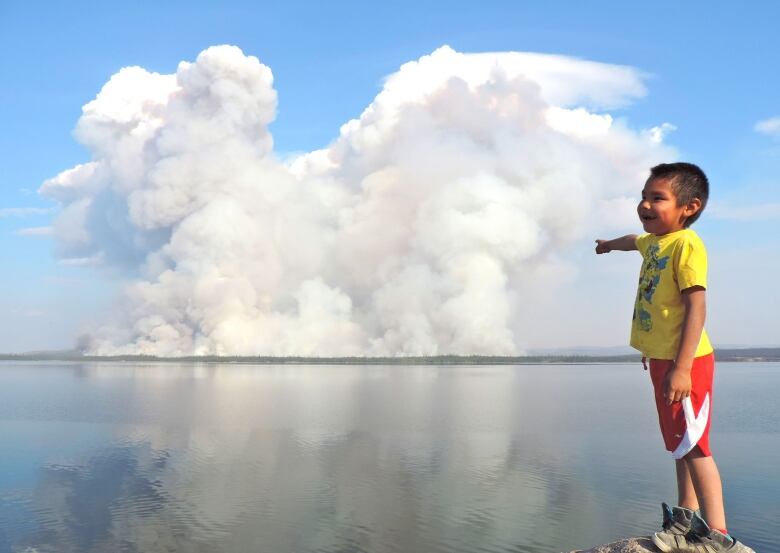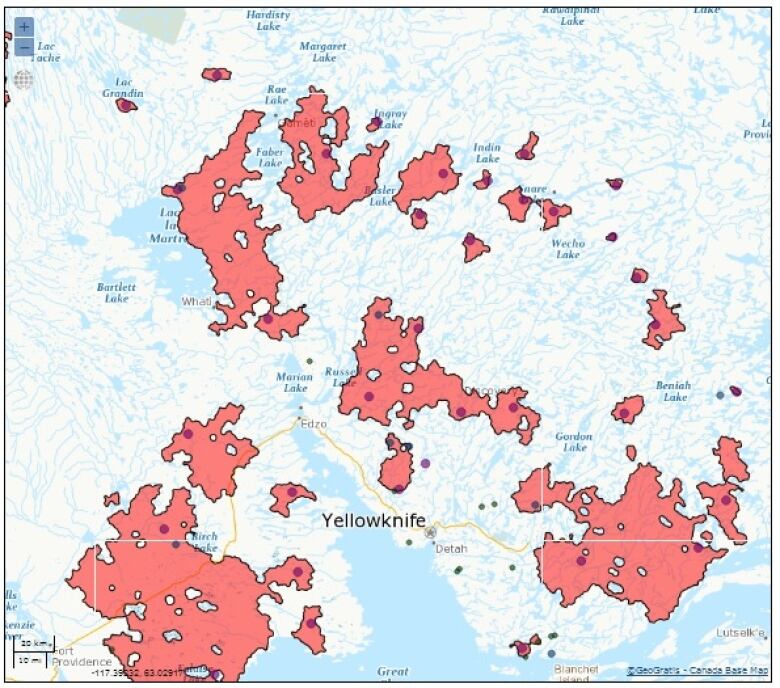After N.W.T. fires, concerns about caribou, bears, bison
'I went out weeks ago, looking for moose, and there was nothing there. Everything is burned'

Hunters and trappers in the Northwest Territories are worried following this year's devastating fire season.
The worst forest fire season in decades has ravaged about 33,000 square kilometres of land an area larger than the size of Vancouver Island.
Most of the destruction has been in the North Slave region, where Alfred Arrowmaker hunts and traps.
"I went out weeks ago, looking for moose, and there was nothing there. Everything is burned. There is absolutely nothing out there," Arrowmaker says.
"I have lived in Gameti my whole life, and I have never seen this kind of fire in my life before."
Gameti is a community of about 300, which lies along the chain of waterways connecting Great Slave Lake to Great Bear Lake, and has been particularly hard hit by the fires.
The community is planning an aerial survey of the burnt areas.
"It's been burning out there all summer," Arrowmaker says. "We don't know ifthe places where the Caribou used to go are still green out there, or if everything is burnt."
Hunters are holding out hope that the area where they harvest caribou has been spared by the fires.
Scientists say caribou generally bypass burnt areas, making new migration routes, which would make it difficult for hunters like Arrowmaker to find them.
And where fires haven't hit, the hot, dry weather has been hard on lichen, a primary food source for caribou, leading scientist to expect the animals to be in a poor state going into fall.
Bear populations may also be affected

He says that after the territory went through an extreme fire season 15 years ago, there was an increase in the number of bear encounters.
"What we saw in 1998 is the numbers stayed average. That was the year of a bunch of big fires," Ellsworth says. "But in the following year our bear activity in and amongst communities have spiked dramatically. And then the following year they stabilized and went back down."
Ellsworth can't be sure the increase was related to fires, but he says this year, the department will again be monitoring the numbers.
So far, an average number of bear encounters has been reported this year.
Most years, 10 to 15 bears walk into communities.
Bison impact unknown
The impacts of this summer's fires on the bison population remains a mystery.
"We're not aware of any bison being killed by the fires," says bison biologist Terry Armstrong.
He says they were only able to survey about 25 per cent of the Mackenzie bison range this summer because of the smoke.
"We didn't find them in their usual spot and have had trouble finding them period this summer."
Armstrong isn't particularly worried about the animals though.
"I suspect that bison moved out of the way before the fires arrived," he says.
The MacKenzie bison herd was cut in half because of an anthrax outbreak in 2012.
Hunting the herd was banned after that. It's likely that ban will continue this year.
Armstrong says there is a possible positive effect of the fire on bison.
The fires will create new growth, and rejuvenate areas between the Mackenzie River and Great Slave Lake.













_(720p).jpg)


 OFFICIAL HD MUSIC VIDEO.jpg)
.jpg)



























































































